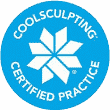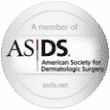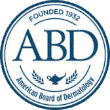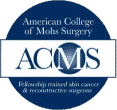What causes skin cancer?
Sunlight is composed of visible light (all the colors we see in daylight), infrared radiation (which provides warmth), and ultraviolet (UV) radiation, which is carcinogenic (cancer-causing). More than 90 percent of all skin cancer is caused by long-term exposure to UV radiation.
UV radiation damages the skin’s DNA, causing a cell to behave abnormally. The body normally has mechanisms to repair damaged DNA but these repair mechanisms do not function normally after exposure to UV radiation. This allows the abnormal skin cell to replicate itself, making more cells with the same damaged DNA. This growing collection of abnormal cells is the beginning of a cancer.
The immune system can often detect and destroy cancer cells, just as it defends against infections by bacteria or viruses. However, UV radiation disrupts the immune system so that our natural defenses may not detect the cancer, allowing it to grow unchecked.
Melanin in the skin, which gives skin its tan to brown color, can block the damaging effects of UV radiation. The more melanin, the darker the skin. And the darker the skin, the better protected it is from UV radiation. This is why a body darkens when exposed to sunlight (tanning). It is trying to build a better shield.
However, the melanin provides only partial protection, even for those with very dark skin. And those with fair skin have almost no melanin to protect them.
It is important to remember that a tan develops only after the skin has been damaged by UV radiation, and that this tan provides only minor protection from additional damage.
In addition to sun exposure, family history may also play a role in a small percentage of skin cancers, especially melanomas.
How can I prevent skin cancer?
The best protection against skin cancer is to minimize sun exposure, especially between 10 a.m. and 4 p.m. If you do go out in the sun, practice good sun protection habits: use a broad-spectrum sunscreen (SPF 30 or higher that protects against UVA and UVB), making sure to cover the head, lips, hands, neck, and ears. Wear a wide-brimmed hat, sunglasses, and protective clothing. Not only will this dramatically decrease your risk of skin cancer, but it will prevent other sun-damaging conditions, like wrinkles and actinic keratoses.
Indoor tanning booths increase the risk of developing skin cancer, despite any claims of their being a safe alternative to natural sunlight. The skin doesn’t tan unless it is first damaged by UV radiation. Intentional tanning should be avoided like any health hazard, such as smoking.
While everyone should minimize their exposure to the sun and UV radiation, fair-skinned people, outdoor workers, and residents of sunny climates should use particular caution.
Another effective weapon against skin cancer is regular skin self-exams. Use a Body Mole Map to record where spots appear on your skin. You can refer to this record the next time you perform a skin exam to determine if there have been any changes.
Because skin cancer can resemble other skin conditions, be sure to tell your doctor about unusual skin changes or lesions, especially these:
- A sore that comes and goes but never completely heals
- A shiny bump or nodule, especially if it appears pearly or translucent (these can look brown or reddish and resemble a mole)
- A slightly raised pink growth with a crusted depression in the center, possibly with tiny blood vessels (capillaries) visible on the surface
- A patch of skin that is red or irritated, especially on the chest, shoulders, or limbs
- A white or yellow-ish waxy scar with poorly defined borders
If you have any risk factors, such as prolonged sun exposure, family history, or a past cancerous lesion, you may benefit from having your skin checked regularly by your doctor.
Reviewed and approved by: Dr. Keith D. Wright











